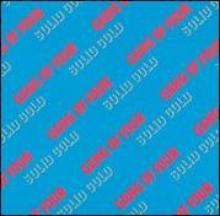I took the movie, Alternative TV become my favorite band for a time and took a listen to that Gang of Four album. Having not been exposed to punk related groups that moved past the generally accepted aural aesthetic of the genre, the Leeds based band sounded removed from my tastes. It was at the time. But I still so clearly recall hearing those rolling rhythms through the cheap, filthy headphones that the music impacted me without a personal knowledge of its occurrence.
Not returning to the band for a few years allowed my ears to take in other musics that served to influence the Gang. James Brown was an easy entrance, but so was all of the weird Ohio New Wave stuff that was readily available. And when contrasting Devo with Gang of Four, there wasn’t really anything too bizarre about any of the music.
Entertainment is easily the group’s most punk related effort. Solid Gold, though, isn’t as immediately identifiable to punk as its own. There’s a shift from some of the denser passages to a sort of empty melodicism understood through the noises coaxed from Andy Gill’s guitar. You can’t whistle what’s going on, but it’s easy to tell that it’s something funky and something that probably didn’t jive with whatever was being mainstreamed at the time of the disc’s release.
That’s not the point to this music – the band wanted to get some of its populist thoughts out there into the Western world. Gang didn’t, obviously, change that way that people in the UK interacted with government, but it did change the way they listened to dance music and punk.
There was an odd confluence of reggae, punk and funk inherent in Gang’s sound that the Clash couldn’t have ever achieved. That more popular band, while still trucking in music with a message, never approached the level of dissidence achieved over Gang of Four’s first two albums. Those were the good ones.
What followed were two additional full lengths moving Gang further and further into trite, fun and somehow dark music to move to. Hard, released in 1983 should be lost to time. Its predecessor, Songs of the Free, issued in 1982 has its redemptive moments. Unfortunately, those are most evident when the band is engaged in live performances of the tracks making up that disc.
It’s hard to not connect Gang with the nonsensical dance punk thing that happened early in the 2000’s. I’d like to separate the two, but can’t. At least those first two albums are boss.
